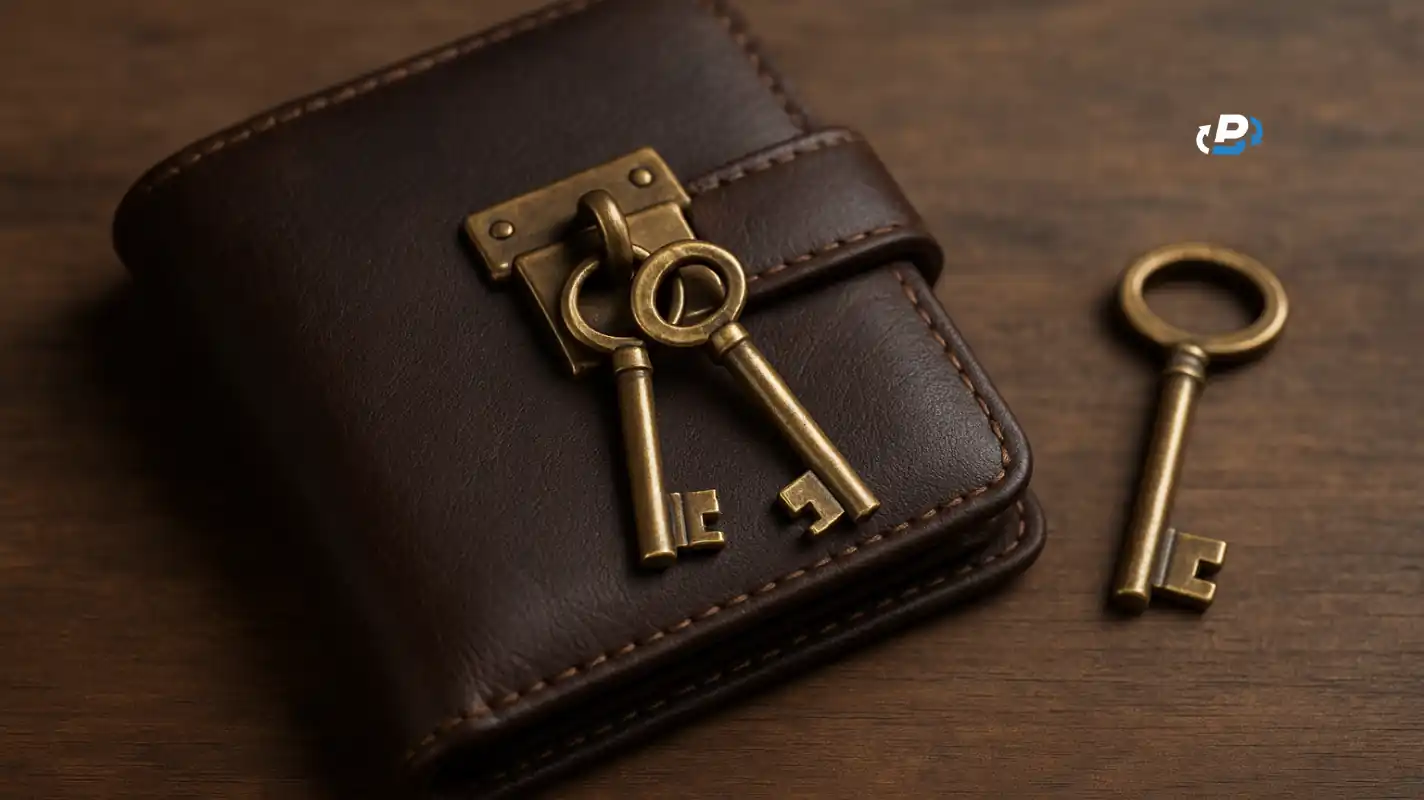If you are like me, you have no patience for following scripted directions. Whether it’s a new gadget, program, or app, I find the how-to paperwork is just like. The Handbook for the Dead (Beetlejuice 1988) and reads like stereo instructions. If you are new to cryptocurrency, or even if you’ve been a player for a while, you know just how difficult it was to wrap your head around how it worked and how to set up your crypto wallet. Technology doesn’t wait for us to catch up. It moves on, regardless. One of the latest things is the multisignature, or multisig wallet which requires even more expertise than single-user wallets. In this article, the Plasbit team will provide a simple step-by-step instruction guide on how to set up multisig wallet? All you have to do is download the Tronlink Wallet extension or app, deposit a 100 TRX setup fee, connect the wallet to TronScan, go to "asset management" and find the permissions tab, fill in the addresses you wish to include as signers on the multisig wallet and confirm the multisig wallet creation process.
What is a Multisig Wallet?
Simply put, it’s a wallet controlled by up to five people, all, or a minimum of whom must approve and sign a blockchain transaction before that transaction can be approved. Unlike single-sig wallets that only require the owner of the wallet to initiate, sign and approve a transaction, multisig wallets require more than one person to complete a transaction. Multisig allows for two, three, or even five people to digitally sign off on all crypto transactions. The number of private keys one chooses to sign a transaction is based on the size and needs of the group. There can be as few as two, or as many as five key holders assigned to a wallet, represented by the letter “N”. The minimum number of people necessary to approve the transaction is represented by the letter “M”. Combinations can run as low as 1-of-2, or as high as 3-of-5, depending on the security needs of the group or organization. It could be that the organization requires unanimity, referred to as N-of-N. If two people control a wallet, like two partners, it is a 2-of-2 modal.
Why would you consider a multisig wallet? Isn’t a single signature wallet enough? For most people, a single-signature wallet fits the bill. They are not now or ever intending to allow others access to their wallets. On the other hand, it could be that two or more people share the same financial goals, for example, if a couple decided to create a savings account using cryptocurrency assets, they could set up their wallet where both must agree, requiring a 2-of-2 modal. That is, two people control the wallet and both must agree. If it was created to fund an escrow account with a third party acting as a neutral party, it could be a 2-of-3 modal where one of the two principles along with a neutral arbitrator assigned a private key who must then agree or disagree to allow a transaction to go forward. And, If it’s a large corporation or a decentralized autonomous organization (DAO) providing grant money or finan ce funding, it could be a 3-of-5 modal where three of the five wallet custodians must agree.
Let’s compare this to a single signature, or singlesig, wallet. In this case, the wallet has one owner who can transfer or receive cryptocurrency, non-fungible tokens (NFTs) (assets that have been monetized, digitized, and placed on a blockchain), or information, directly to another wallet without requiring approval from anyone. For example, if someone wants to send cryptocurrency to another wallet, all they need is the address of the receiver, make their selection in their wallet, hit send, and the wallet does the rest. The transfer is immediate.
If you are still not sure, let’s look at some pros and cons for singlesig wallets compared to multisig wallets.
SingleSig Wallets
Pros:
- Sole Ownership: It is estimated that 70 percent of all crypto wallets are held by single users. No one else has access to the content of the wallet.t, be it cryptocurrency, NFTs, or information.
- Security: Singlesig wallets have a singe-point of access. One owner holds one private key to send and receive assets.
- Speed: Transactions can be conducted quickly as only one signature is required to conduct a transaction.
Cons:
- Reduced Security: If a key is lost or stolen, those assets can be compromised.
- Backup failure: If a key is lost and care was not taken to safeguard the recovery key, assets cannot be recovered.
- Storage Vulnerability: While singlesig wallets offer higher forms of security, keys held by third parties, such as cryptocurrency exchanges, have been compromised, resulting in stolen assets.
MultiSig Wallets
Pros:
- Security: The assets stored in a multisig wallet are shared. No one can move the assets without the approval of others, providing protection and transparency.
- Functionality: If a member of the group loses their key or if it is stolen, others in the group can still move forward to approve transactions.
- Key Recovery: Lost keys can be recovered using the seed, or recovery phrase, created when the wallet was activated. Otherwise, the private key can be resurrected using other personal information.
Cons:
- Lost Time: Key holders may not always be available to approve transactions as they are unavailable, thus delaying the transaction.
- Limited Compatibility: Not all cryptocurrency platforms or blockchains support multisig at this time.
- Technically Challenging: Setting up a multisig wallet requires technical experience to set it up correctly.
What is a Multisig Wallet: One Wallet, Multiple Keys
So, what is a multisig wallet? its a type of crypto wallet that requires two or more private keys to authorize a transaction, instead of just one to allow individuals with shared interests to pool their crypto assets together into one wallet to make transactions that benefit the group. Examples include:
- 2-of-2: Two brothers create a savings account to, say, buy a boat together. Before any crypto can be spent, both must agree and provide their signature to release the funds.
- 2-of-3: Three business partners decide to open a restaurant, so they pool their funds together. Before any purchases are completed, two of the three partners must agree.
- 3-of-5: These people could represent a controlling interest in a large business interest, trust, or investment venture. This could be a traditional venture, or a decentralized autonomous organization (DAO), which is operated from the bottom up (the members control the organization, not a chair and board of directors). With a 3-of-5, a minimum of three members must agree to and sign the transaction. Perhaps this is a philanthropic DAO and a nonprofit group or individual asks for funding for, say, a neighborhood medical clinic or food pantry. Three members sharing custody of a wallet must approve that request.
So, if you are ready, let’s get started!
A Step-by-Step Guide to Setting Up a Multisig Wallet
1. Download the TronLink extension for your browser (or the application if you are using a phone)
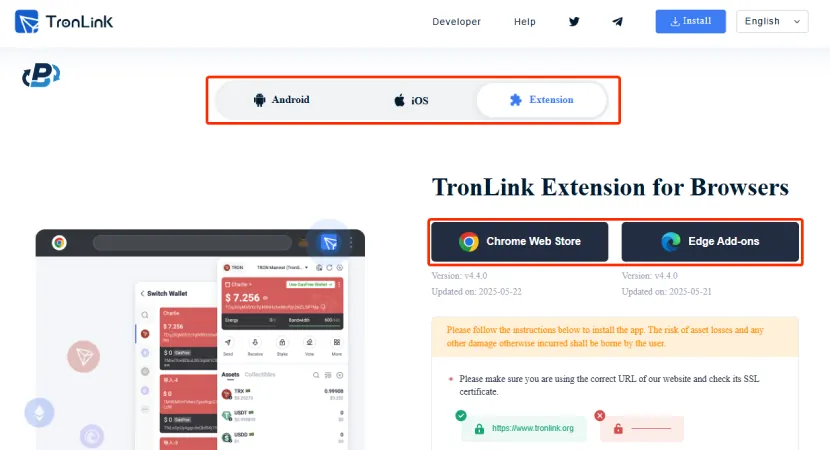
2. Open the extension, click on "Create Wallet" and follow the steps
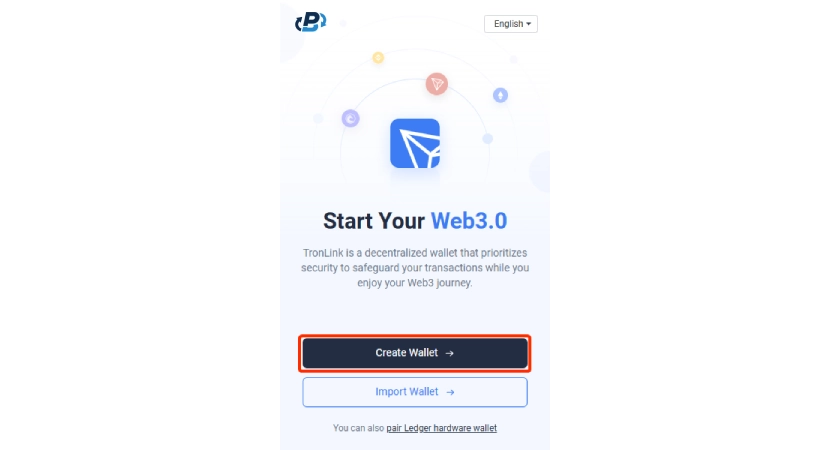
*Before starting the process, make sure the wallet you have just created has at least 100 TRX, which is the fee for setting up the multisig wallet
3. Go to the tronscan website and click on "Connect Wallet" in the top right corner.
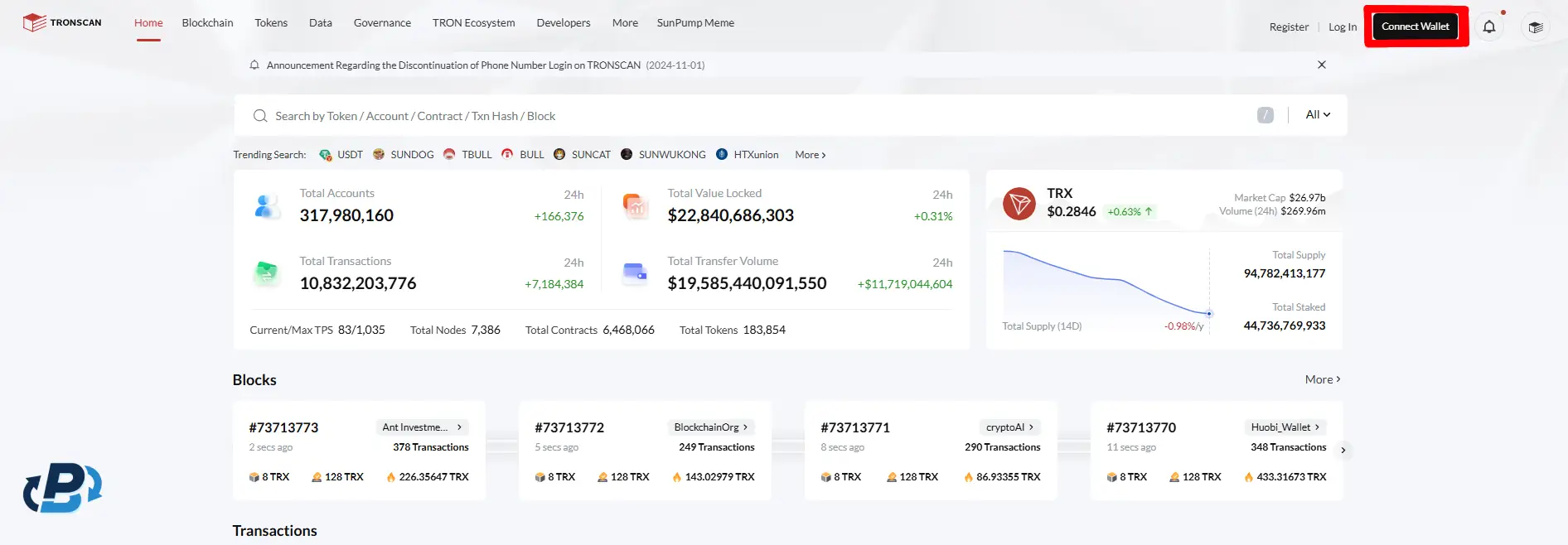
4. Select TronLink as your connection method and click "Connect"

5. Click on "Asset Management" in your wallet
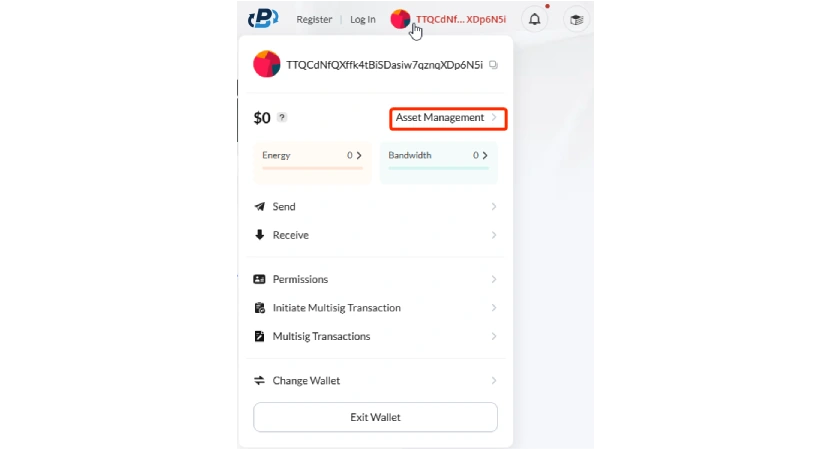
6. Now, go to the "Permissions" tab
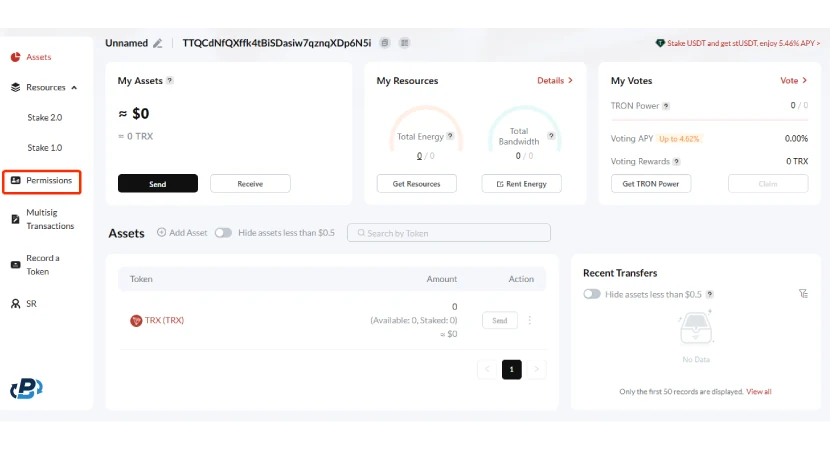
7. Click on "Edit Permissions"
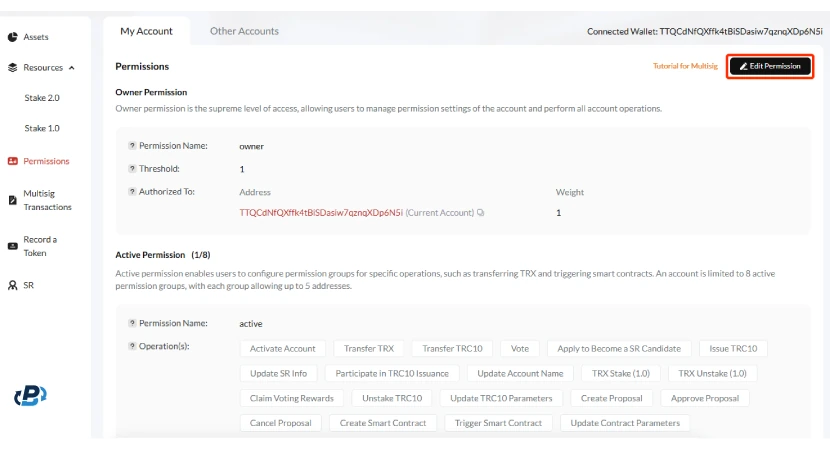
8. First, set the threshold, which is the combined weight that needs to be reached to approve a vote. Then, add the wallet addresses and assign the weight for each one.
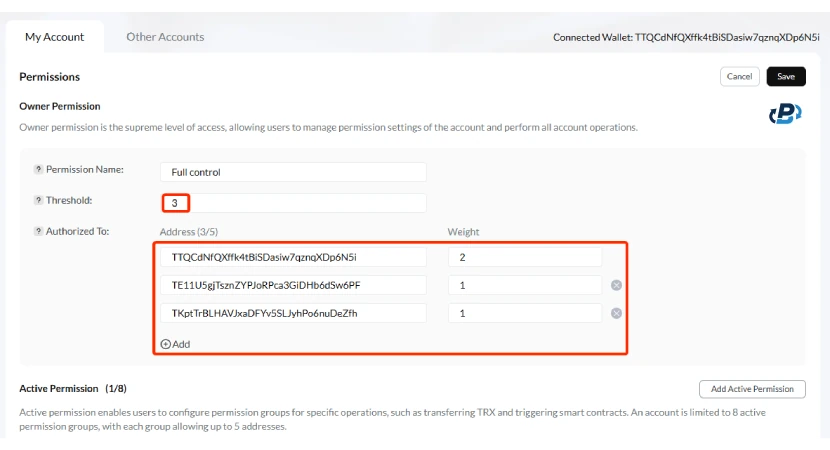
* The next section is called 'Active Permissions,' where you’ll define what actions the wallets can perform besides signing transactions
9. Under the "Operations" Section, decide which actions can be voted on. Then, under the "Authorized To" section, fill in the same addresses from the last step and their weight.
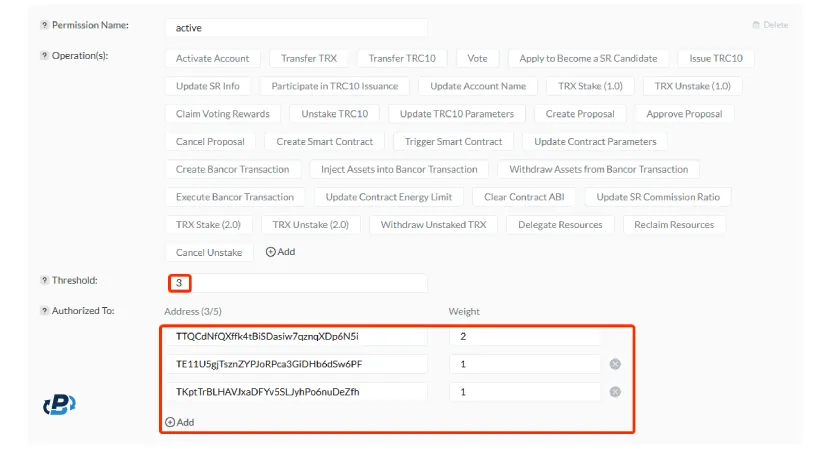
10. Scroll back up and click on "Save"
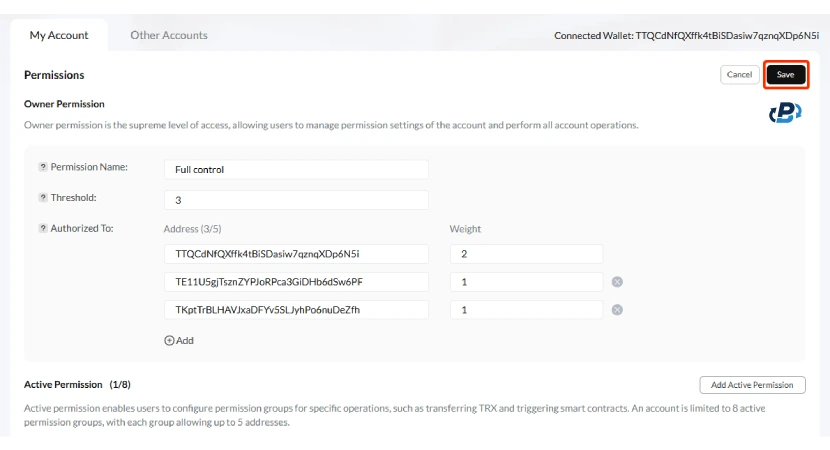
11. Read the Security Tips and click on "Confirm"
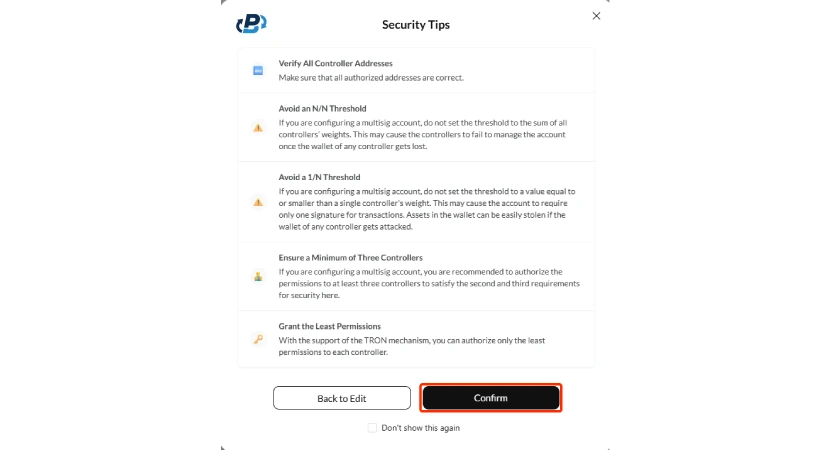
12. Click on "Confirm" once again, note that the wallet will be charged 100 TRX
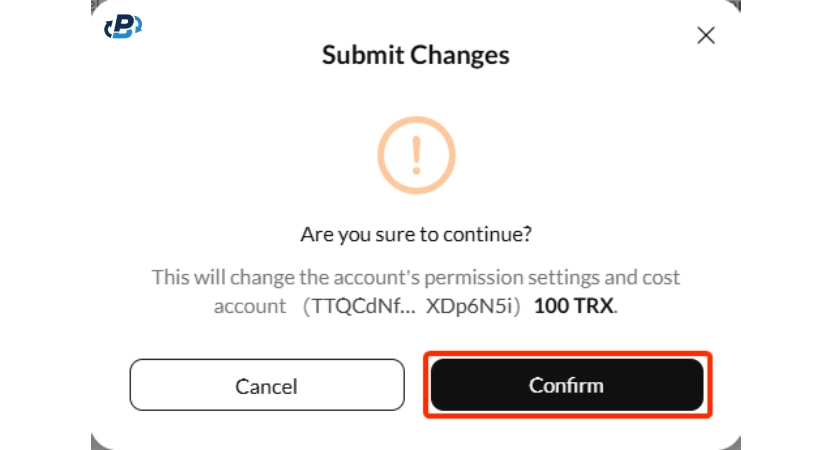
13. You will be redirected to the TronLink wallet. Click "Sign"
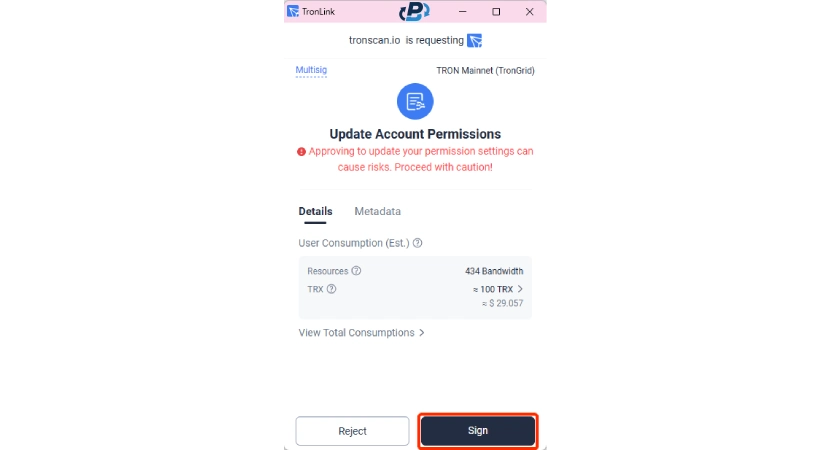
14. Click "Confirm"
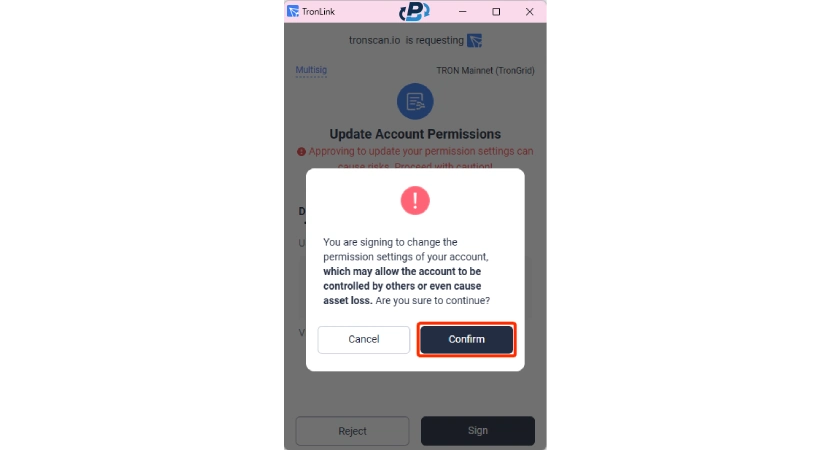
15. That's it, you had successfully created the multisig wallet, click confirm one last time.
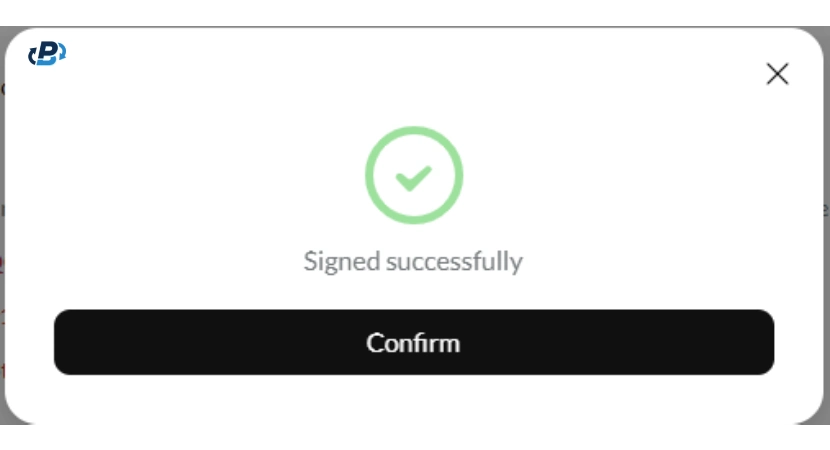
How to Create a Multisig Tron Wallet?
If you have a TRON wallet (a digital wallet that holds TRON (TRX) tokens, or other tokens on the TRON blockchain), you also have the option to create a multisig wallet on this platform. Not only does the TRON wallet store TRX and other tokens, it also offers users a safe space to sign smart contracts while also allowing users to interact with decentralized applications (dApps) (apps that run on a blockchain instead of the centralized Web). So, in case you are asking yourself how to create multisig TRON wallet? start by downloading TronLink and creating a wallet, deposit at least 100 TRX to cover the setup fees, then connect your wallet to TronScan and navigate to the “Asset Management” section and select the “Permissions” tab. There, you can enter the addresses you want to include as signers in your multisig wallet. After filling in the details, review and confirm the process.
Setting Up a Multisig Wallet on Tron
First thing first, you need to choose a provider. In this case, we will choose Tron. How to open a tron multisig wallet? Get the TronLink extension or app and open a wallet, deposit at least 100 TRX to cover setup fees, then connect it to TronScan and go to the “Asset Management” section and get to the “Permissions” tab. There, add the signer addresses, review the details, and confirm to complete the multisig wallet setup. As you are setting up, you need to determine how many people (N) will be assigned to the wallet then the minimum number of people (M) who must approve transactions. It could be that everyone must agree. Once you have decided how many people are necessary to control the fund, you will need to set up individual wallets for each individual.
How to Set Up a Multisig Wallet in Ethereum
If you are part of the Ethereum blockchain and want to add a multisig wallet on Ethereum, Plasbit wants you to know that you can do so with SAFE wallet. So, how to set up a multisig wallet in Ethereum? You can do it with Safe Wallet (formerly Gn osis Safe), choose the Ethereum network from the right corner, connect your software/hardware wallet, add the number of cosigners you like, and set the number of signatures required to confirm the transaction. Click Create, and you are good to go!
What are Multisig Wallet Scams?
Scammers. Con artists. Grifters. All are students of human nature and they are all aware that their marks (those they target to cheat) embody one of two characteristics. Either they are gullible and are open to any sob story, or they simply believe their good fortune is long overdue and will ignore the rule that says if something is too good to be true, it probably is. If bad actors work to exploit those weaknesses, in many cases they succeed in relieving their prey of those assets, disappearing without a trace. Even with its advanced security measures requiring more than one signature, all it takes is one weak moment or one lapse in judgement for the bad actor to get the upper hand by simply convincing their target they, too, have a crypto wallet when they don’t.
In some cases, it can be a phishing scam designed to access one’s device, locate and steal the victim’s set of private keys, thereby secretly adding themselves to the group. Or, it could simply be the more traditional sob story. Here’s one I received multiple times, following post I made on YouTube, which happens to be one of a typical scam going around today on that platform.
The sender, responding to my post, replied, “Thanks for sharing that!. Could you help me with a quick off-topic question? I have USDT in my OKK wallet, and I possess the 12-word passphrase (and added security phrase for those looking for added security): like joke coast great adjust unveil salt energy gallery pulp hockey fluid (the phrase). What is the process to send my USDT to Binance?”. The sender believes that by sharing their added security phrase they assume I will trust them.
There are other variations found on popular platforms, but all include a private key or seed phrase, but it’s just a ruse to draw you in. Their end game is to convince you to share your wallet and add them as co-owner. It could be the scammer that tries to trick the holder to deposit their crypto into the scammer’s wallet which they claim is safer. There’s one scam asking for help to pay for gas fees. For those new to crypto, these are transaction fees charged by the crypto exchanges.
So, how do you avoid them? Use your common sense!
- Be careful when you receive unsolicited emails promoting investment opportunities. Delete them.
- Be skeptical when dealing with unknown actors. Don’t send funds to an account you don’t know.
- Be smart and only use trusted sites.
Remember, if it’s too good to be true, it probably is.
Summing Up
The Plasbit team wants you to know that multisig wallets offer an added level of security, making it possible for multiple users to share the same assets. While most crypto users will never need a multisig wallet (remember, 70 percent are single holders), the growing potential for multisig wallets can grow significantly as more and more individuals, groups, and associations learn its value. It’s not as easy to set up as singlesig wallets, and does require some technical expertise. In fact, key management is considered one of the main vulnerabilities. Keys get lost or or stolen if improperly stored. In addition to requiring technical expertise to set up a multisig wallet, it also requires technical expertise to remove someone from a wallet. But once it is set up, you can bet your assets will be much safer when they become a family affair.




